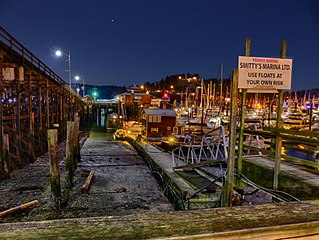
Gibsons is a coastal community of 4,758 in southwestern British Columbia, Canada on the Sunshine Coast, where the southwest bank of Howe Sound meets the Strait of Georgia.
British Columbia Highway 101, also known as the Sunshine Coast Highway, is a 156 kilometres (97 mi) long highway that is the main north–south thoroughfare on the Sunshine Coast in British Columbia, Canada.

RCMPVSt. Roch is a Royal Canadian Mounted Police schooner, the first ship to completely circumnavigate North America, and the second vessel to transit the Northwest Passage. She was the first ship to complete the Northwest Passage in the west to east direction, using the same route that Amundsen on the sailing vessel Gjøa had traversed east to west, 38 years earlier.
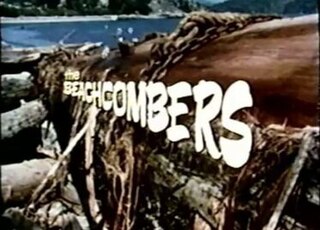
The Beachcombers is a Canadian comedy drama television series that ran on CBC Television from October 1, 1972, to December 12, 1990. With over 350 episodes, it is one of the longest-running dramatic series ever made for Canadian English-language television.
Bruno Santos Gerussi was a Canadian stage and television actor, best known for the lead role in the CBC Television series The Beachcombers from 1972 to 1990. He also performed onstage at the Stratford Festival, worked in radio, and hosted Celebrity Cooks, a daily cooking/variety show, on CBC from 1975 to 1979 then on the Global Television Network from 1980 to 1987.
Robert Allan Clothier, DFC was a Canadian stage and television actor most famous for his role as Relic on the CBC television series, The Beachcombers.

Theodore Tugboat is a Canadian children's television series about an anthropomorphic tugboat named Theodore who lives in the Big Harbour with all of his friends. The show, which aired from 1993 to 2001, originated in Halifax, Nova Scotia, Canada as a co-production between the CBC, and the now defunct Cochran Entertainment. It was filmed on a model set using radio controlled tugboats, ships, and machinery. Production of the show ended in 2001, and its distribution rights were later sold to Classic Media. The show premiered in Canada on CBC Television, then went to PBS, was on Qubo in the United States, and has appeared in eighty different countries.
Gambier Island is an island located in Howe Sound near Vancouver, British Columbia. It is about 17,049 acres in size and is located about 10 kilometres north of the Horseshoe Bay community and ferry terminal in westernmost West Vancouver.

Keats Island is an inhabited island located in Howe Sound near Vancouver, British Columbia. Most people who spend time on the island are visitors to one of the camps or the Marine Park, or owners of seasonal cottages.

Victoria Harbour is a harbour, seaport, and seaplane airport in the Canadian city of Victoria, British Columbia. It serves as a cruise ship and ferry destination for tourists and visitors to the city and Vancouver Island. It is both a port of entry and an airport of entry for general aviation. Historically it was a shipbuilding and commercial fishing centre. While the Inner Harbour is fully within the City of Victoria, separating the city's downtown on its east side from the Victoria West neighbourhood, the Upper Harbour serves as the boundary between the City of Victoria and the district municipality of Esquimalt. The inner reaches are also bordered by the district of Saanich and the town of View Royal. Victoria is a federal "public harbour" as defined by Transport Canada. Several port facilities in the harbour are overseen and developed by the Greater Victoria Harbour Authority, however the harbour master's position is with Transport Canada.

The history of steamboats on the Oregon Coast begins in the late 19th century. Before the development of modern road and rail networks, transportation on the coast of Oregon was largely water-borne. This article focuses on inland steamboats and similar craft operating in, from south to north on the coast: Rogue River, Coquille River, Coos Bay, Umpqua River, Siuslaw Bay, Yaquina Bay, Siletz River, and Tillamook Bay. The boats were all very small, nothing like the big sternwheelers and propeller boats that ran on the Columbia River or Puget Sound. There were many of them, however, and they came to be known as the "mosquito fleet."
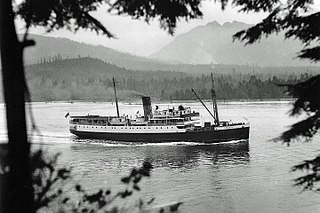
For more than 35 years, from 1923 to 1958, the Union steamship Cardena sailed the British Columbia Coast, carrying passengers, groceries, dry goods, industrial cargo, mail and sundry other supplies to the 200 or so mining, logging and fishing communities that once dotted the province's coastline during the early years of the 20th century. On her return voyage, at the peak of the summer fishing season, Cardena routinely carried thousands of cases of canned salmon to the railheads at Prince Rupert and Vancouver for shipment across Canada and around the world. And so it went for the better part of half a century; a regular and reliable marine service that made Cardena a coastal institution, remembered with affection and regard by the countless men, women and children who inhabited those tiny outports in a bygone era.

ST Cervia was built in 1946 as a seagoing tug for use as a fleet auxiliary by Alexandra Hall & Company Ltd of Aberdeen, Scotland. Today she is a floating Museum still undergoing restoration in Ramsgate, Kent.
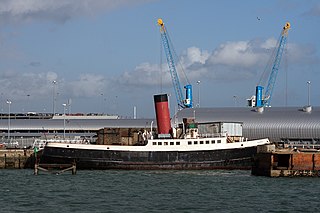
TSS T/T Calshot was a tug tender built in 1929 by John I Thornycroft & Co, and completed in 1930 for the Red Funnel Line. Calshot was one of only three surviving classical tender ships which served the great ocean liners, another example is the SS Nomadic, which tendered the ill-fated RMS Titanic on her maiden voyage at Cherbourg, France. The third being the Manchester Ship Canal's Daniel Adamson. In her career, Calshot has tendered some of the most famous ocean liners ever built, such as the RMS Caronia, the Cunard Queens RMS Queen Elizabeth and RMS Queen Mary, the SS United States, and the White Star Line ship RMS Olympic. During World War II she was requisitioned by the British Admiralty for servicing troop ships and took part in D-Day. She was a registered vessel of the National Historic Fleet of the United Kingdom, holding Certificate No. 1.

Portland is a sternwheel steamboat built in 1947 for the Port of Portland, Oregon, in the United States.
The New Beachcombers was a renewal of the CBC's long-running series The Beachcombers, which ran for 19 seasons from 1972 to 1990. A movie of the week directed by Brad Turner was broadcast in November 2002, to commemorate both the CBC's fiftieth anniversary, and the thirtieth anniversary of the original show's first episode. The Movie of the Week, "The New Beachcombers" served as a pilot for a new series, "The New Beachcombers", that played from 2002 to 2004. A behind-the-scenes documentary film was produced in association with The New Beachcombers, called "Welcome Back to Molly’s Reach", that was released in 2003. A final TV movie made after the new series, "A Beachcombers Christmas" was aired in 2004.
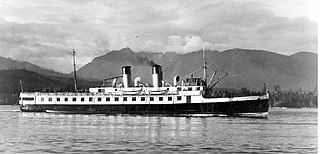
Lady Cynthia was a steel-hulled passenger ship converted from a minesweeper,, which served in the coastal waters of British Columbia from 1925 to 1957. Lady Cynthia was a sistership to Lady Cecilia, also a converted minesweeper. The ship was generally referred to as the Cynthia while in service.

Molly's Reach was a fictional restaurant in the real community of Gibson's Landing, British Columbia, during the nineteen years the Canadian television series The Beachcombers was set there. The series ended in 1990, and the building is now a real restaurant.
Pat John was a First Nations actor from Canada. He played for 19 years in The Beachcombers, the second-longest running series in Canadian television history.













